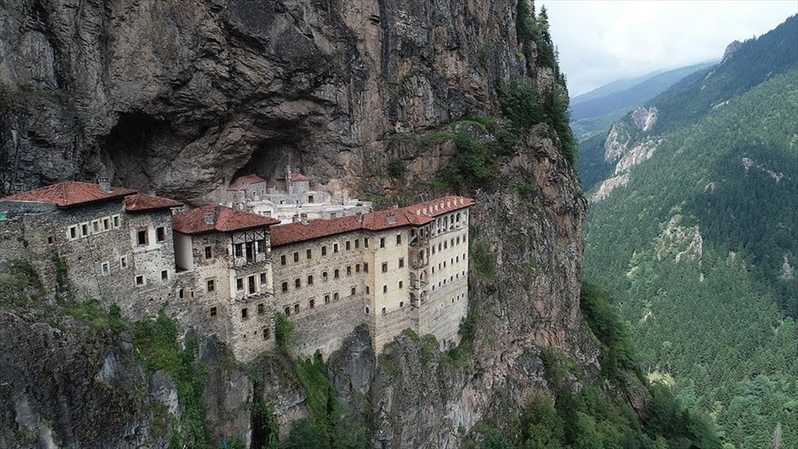With a new announcement issued a little while ago, the Ecumenical Patriarchate informs that the Divine Liturgy will be celebrated normally at Panagia Soumela on 15 August after Turkish authorities finally granted permission.
The announcement of the Ecumenical Patriarchate in detail:
"It is with great joy that it is announced that following a recent decision by the Turkish authorities, permission was granted to hold a Patriarchal Divine Liturgy on the feast of the Assumption of the Virgin (August 15) at the Monastery of Panagia Soumela."
It is recalled that on July 20, the Turkish authorities had informed the Ecumenical Patriarchate that the relevant request had been rejected.
According to Kathimerini and SKAI, written permission from the Turkish Ministry of Interior is expected in the next few days.
It is not known when the monastery was founded, but the Turkish Ministry of Culture and Tourism places the date around AD 386, during the reign of the emperor Theodosius I (375–395).
According to William Miller, two Athenian monks named Barnabas and Sophronios founded the monastery. It became famous for an icon of the Theotokos known as the Panagia Gorgoepekoos, said to have been painted by the Apostle Luke.
In 1923, the Sumela Monastery was abandoned following the population exchange between Greece and Turkey as laid down in the Treaty of Lausanne.
In 1930, the wooden parts of the Sumela Monastery were destroyed by fire and in the years following other parts of the monastery were damaged and pillaged by treasure hunters.
As of 2012, the Turkish government is funding reconstruction work, and the monastery is enjoying a revival in pilgrimage from Greece, Georgia and Russia.
The monastery's primary function is as a tourist attraction. It overlooks forests and streams, making it popular for its aesthetics as well as its cultural and religious significance.
On 15 August 2010, Orthodox divine liturgy was allowed to take place in the monastery compound.
A special pass issued by the Ecumenical Patriarchate of Constantinople is required to visit on August 15, the day of the Dormition of the Theotokos or Feast of the Assumption, when a divine liturgy is held. Only 450 to 500 visitors are allowed inside the monastery, although widescreen televisions are available to observe the event at a nearby café.
On 22 September 2015, the Monastery was closed to visitors for three years due to necessary restoration and field work. It reopened on May 18, 2019.
In 2022, video footage showed modern music and dancing at the site. Amid outcry on the internet that the historic monastery was turned into a dance club, an explanation was given that this was done to promote tourism.
READ MORE: The church of Agia Theodora Vasta in Arkadia, Greece.

